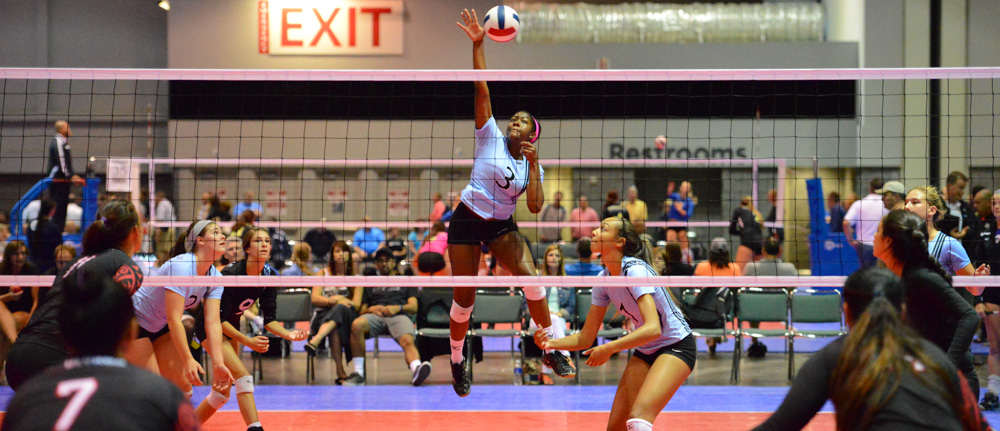

What differences do you notice between the following three pairs of athletes?
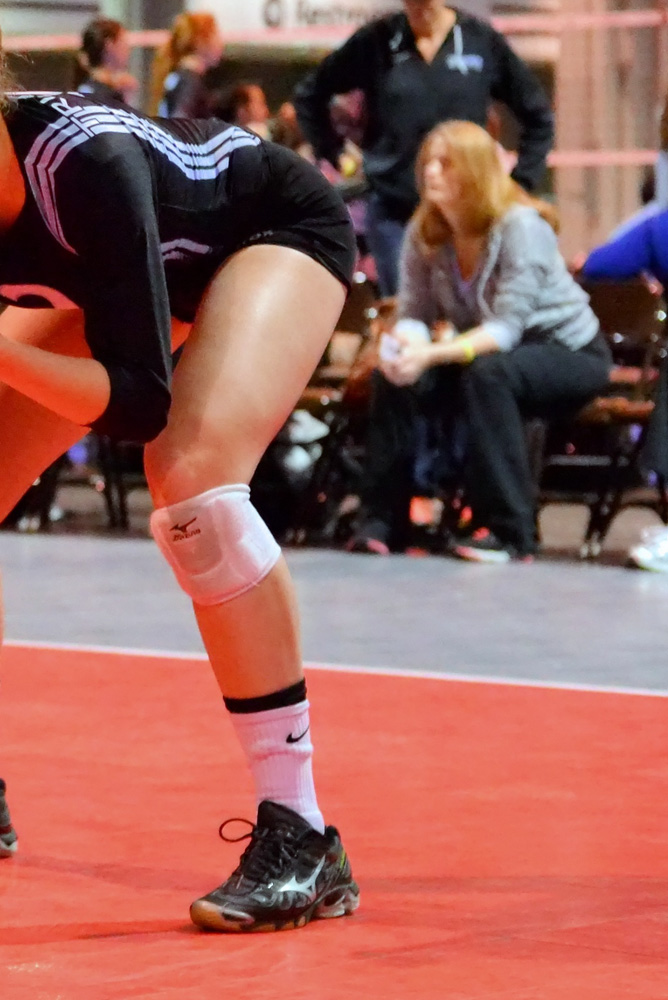
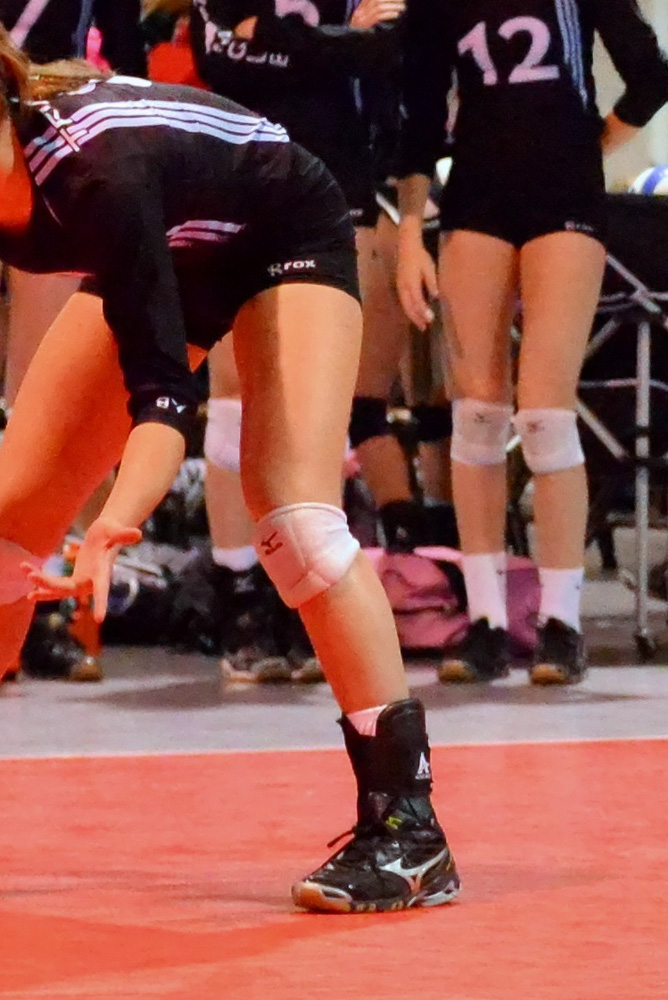
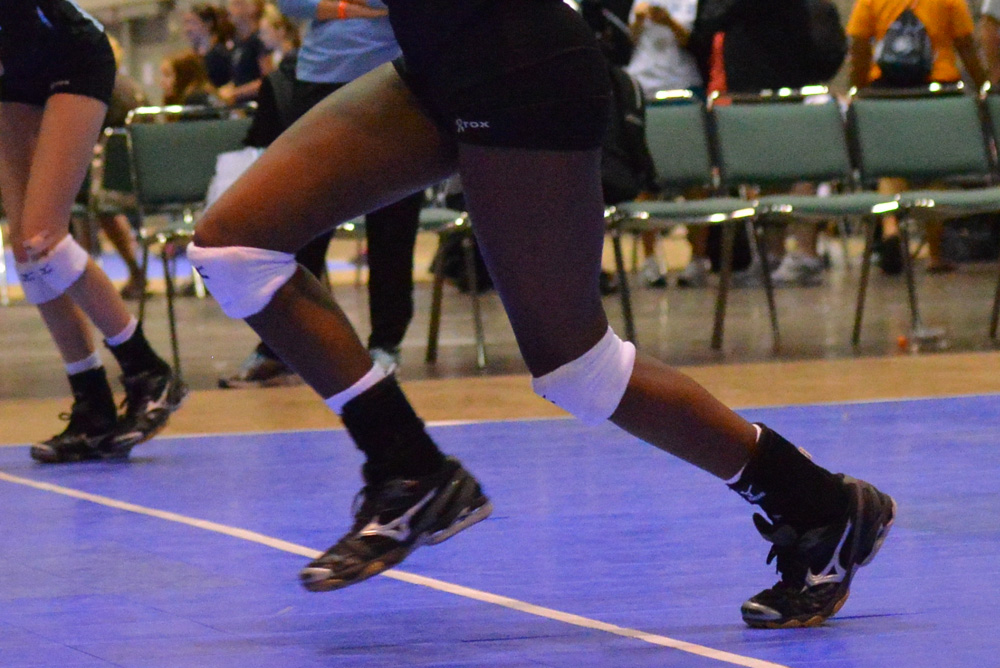
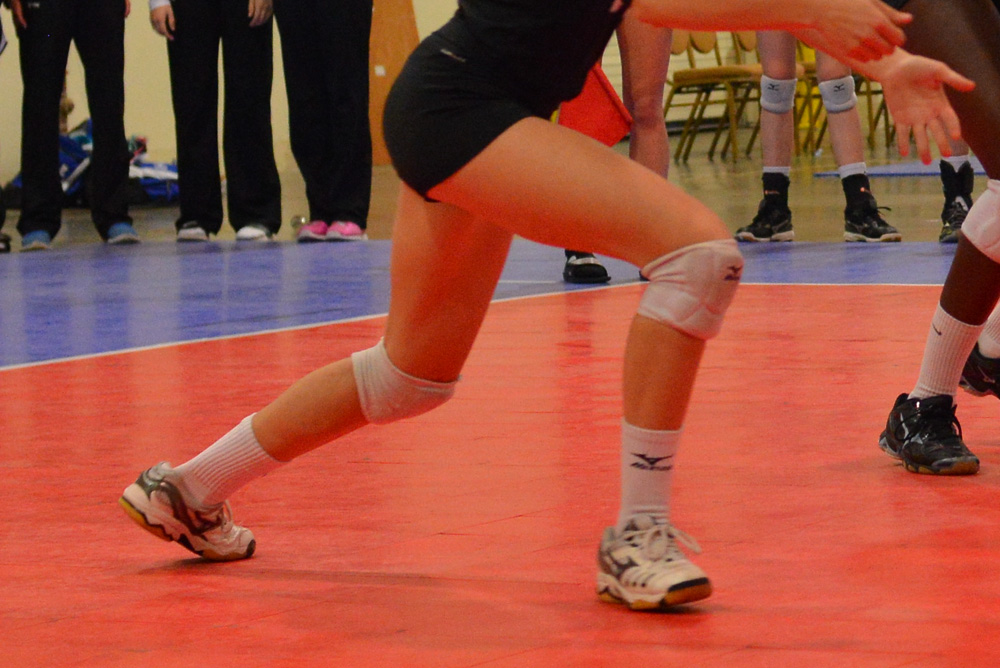
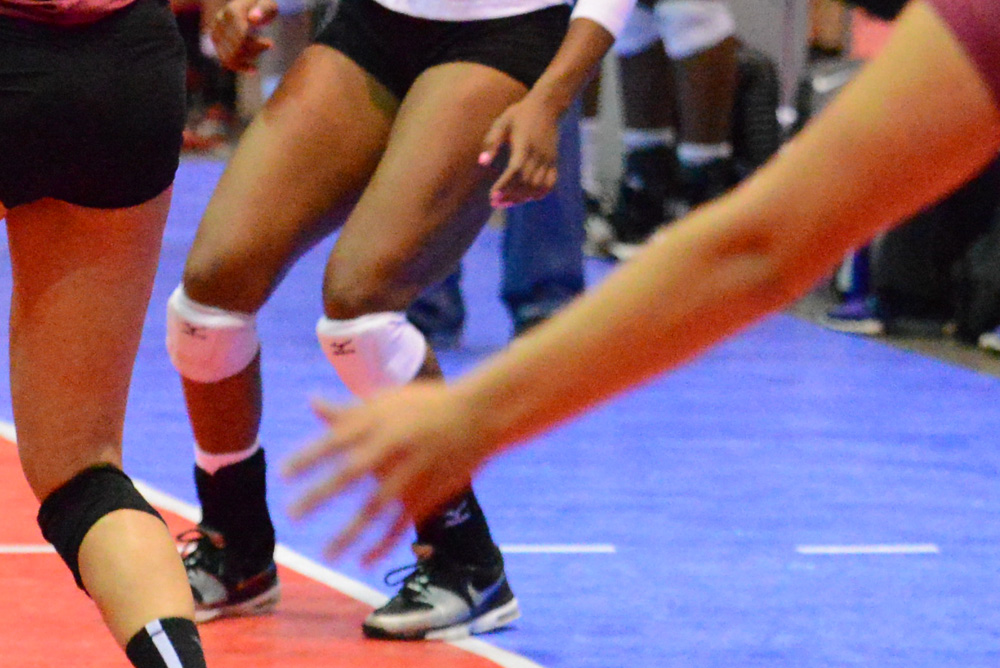
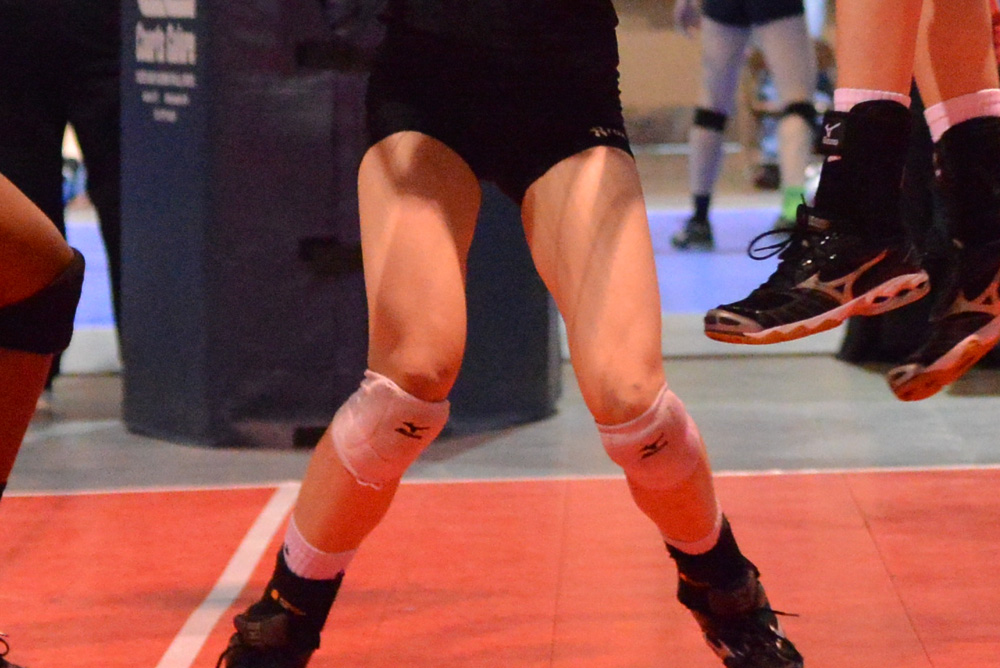
Let's start by identifying what they have in common -- all six of these athletes play at the highest competitive level for their ages, train at the same club, and are incredibly proficient as measured by their performance on the court. Yet when you look closely at their positioning while performing common movements, differences are evident.
You might notice that Athlete A is in a deeper, more flexed position at the hips as she assumes a low ready position for serve receive. While Athlete B is similarly low as measured at the shoulders, pay special attention to the position of their spines. Due to her greater hip flexion, Athlete A is able to maintain a flat, neutral spine -- an ideal position for safely transmitting power from the hips and glutes for an explosive first step. Athlete B, however, is bending through her back to get low instead of flexing at the hips and knees. While both are effective defenders, who is better protecting her spine?
Note the direction the feet are pointing in these two rapidly-accelerating athletes. Athlete A's feet are pointing straight ahead, while Athlete B's feet are pointed outwards in a classic "duck-footed" stance. How well would your car drive with its tires similarly aligned? Ensuring that an athlete's feet are pointing straight ahead in the direction of motion is one of the most critical positioning factors for avoiding acute and chronic knee and ankle injury.
Athlete A is a good example of a solid landing -- coming down with feet pointing forwards, flexing at the hips, and maintaining vertical shins so as not to push her knees forward. Athlete B, on the other hand, has toes pointing a bit outwards with knees collapsing inward and forwards -- thus exposing her knee ligaments to significant valgus stress. Valgus knee stress is commonly associated with acute ACL injury, as well as chronic joint and ligament irritation.
The examples above are not unique -- they are repeated thousands of times per athlete, per season. The cumulative effect of moving with suboptimal positioning and mechanics should be concerning to players, parents, and coaches. But given that practice time is precious, how much effort should volleyball programs put into building a foundation of safe and effective movement?
In considering this question, I've personally reached the conclusion that there exists a "law of nature" governing the relationship between safety and efficiency. While calling it a law is a strong assertion, all of my academic study and practical experience has led me to believe that as one seeks to move safely, one gains efficiency. Until disproven, I'm calling this the Law of Intelligent Design.
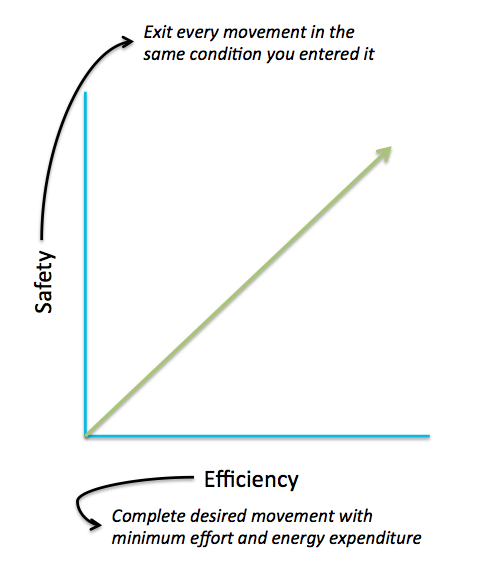
Let's start by defining some terms. As illustrated above, safety should be understood as your ability to exit every movement successfully, and in the same condition that you entered it. Not only did you not suffer an acute injury, you also didn't make a significant withdrawal from your body's functional capacity that will negatively affect you later. In other words, consider safety in terms of avoiding both chronic and acute injury.
Efficiency is straightforward -- did you complete the desired movement with the least amount of effort? Or were you forced to work from a disadvantaged position that made the task more difficult? Given that your endurance is pushed to the limit in competitive situations, efficiency may be critically important to winning that last point.
So what impact does efficiency have on performance? After capturing and reviewing over 30,000 pictures of prep volleyball over two years, with teams ranging from 12 to 18 years old and playing at every level from local to national tournaments, I can't claim that I've discovered another law of nature. But I've at least generated a hypothesis. Of course, let's call it the Efficient Performance Hypothesis.
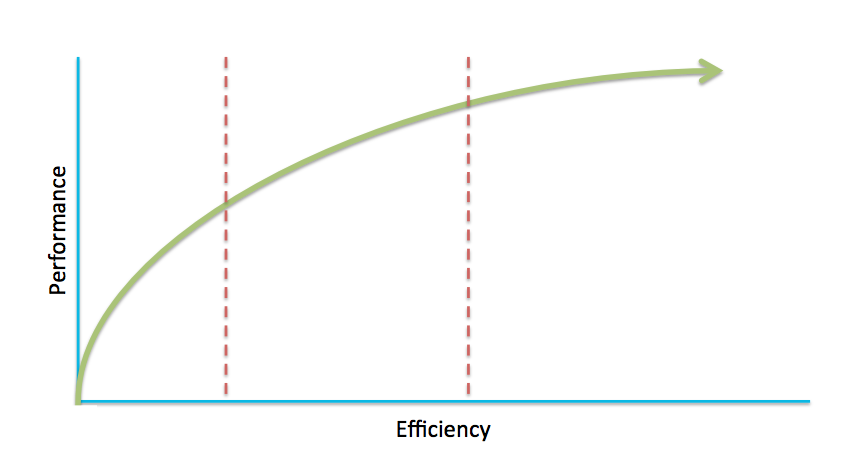
While I don't believe the relationship between efficiency and performance is entirely linear, my observations suggest that the two are exponentially related as shown above. In the above illustration, the red vertical lines indicate boundaries between different levels of play -- roughly equivalent to different divisions in a league or tournament.
Consider the leftmost area, where performance increases rapidly with small increases in efficiency. For example, consider the benefit a player gets from learning to anticipate and move towards the ball. Suddenly a player is in position and can make a simple controlled pass, instead of a desperate last-second dive. This level of play, with its potential for rapid performance gains with small increases in efficiency, correlates with beginning players and teams that you might see at a regional tournament.
Next consider the middle area of the chart. Increases in efficiency result in performance gains that are not quite as steep as they once were, but it's still a relatively constant relationship. At this range of efficiency, players and teams have a basic level of competence with serving, passing, and hitting, communicating and moving together. This relatively wide variety of efficiency and performance is typical for "Club" division matches at a national tournament.
As we move to the rightmost area of the chart, further increases in efficiency result in smaller increases in performance -- but performance is still increasing. Consider this area as the "Open" division at a national tournament. Teams and their players are competent with volleyball technique, and seemingly small differences in physical performance and mental toughness spell the difference between victory and defeat.
If increasing a team's overall efficiency can result in even a small improvement in performance, is it worth pursuing?
What if increasing a player's efficiency can avoid an injury, or quicken recovery and return to top performance?
From my perspective as a concerned parent, testing the Efficient Performance Hypothesis by seeking safe positioning and movement just makes sense.
Competitive volleyball programs devote at least a portion of their training schedule to non-volleyball-specific physical conditioning. If we want the best long-term outcomes for our players and teams, I'd suggest that programs adopt a "process first" mentality that emphasizes mobility as a skill that must be learned, and prioritizes form and technique above simply task accomplishment.
Focusing on process instead of outcome in physical conditioning should not be a stretch for most organizations. Great volleyball programs already emphasize process over outcome in volleyball training -- translating that mindset and approach to physical conditioning just requires a bit of education and focused attention that will benefit everyone involved.
First off, what do I mean by mobility? Kelly Starrett, doctor of physical therapy and high-level coach/trainer who is one of the leading voices translating safe and effective movement to the athletic arena, defines mobility as the combination of motor control, strength, and flexibility necessary to complete the desired movement safely and efficiently. Graphically, I think about mobility in the context of physical conditioning as follows:
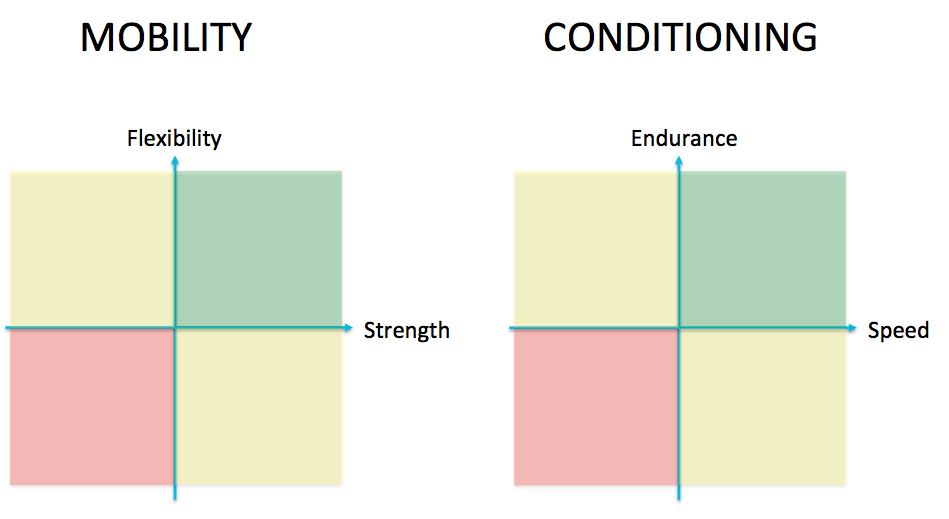
Clearly, we want to operate in the right upper quadrant -- strong and flexible with speed and endurance.
I'd argue that most competitive volleyball programs do an excellent job with conditioning. Increased endurance and speed is a natural outcome of hours spent at work and at play in the gym.
Mobility, however, requires focused attention. Look back at our first example, the two players in the defensive ready position. Most likely, Player B with the rounded spine is operating in the right lower quadrant of the Mobility chart above: high overall strength, but missing posterior chain and hip flexibility to comfortably assume a deeper flexed position while maintaining a neutral spine. Now consider Player B in the Landing example. She may be operating in the left upper or left lower quadrant -- perhaps lacking some hip flexibility, while missing the strength and motor control necessary to land with her hips, knees, and ankles in an optimal position.
Once we have a working understanding of mobility, its importance in preventing injury is clear. Acute injuries result from exceeding the body's (immense) functional capacity, typically by applying force in a suboptimal or dangerous position. Chronic injuries result from moving with suboptimal mechanics over time. If our athletes have the necessary flexibility and motor control to start every movement in a good position, maintain their ideal position throughout the movement, and finish the movement in a good position, the vast majority of acute and chronic injuries can be avoided.
So where does an interested program, coach, parent, or player go from here? I'd suggest that we consider volleyball training in terms of the below illustration.
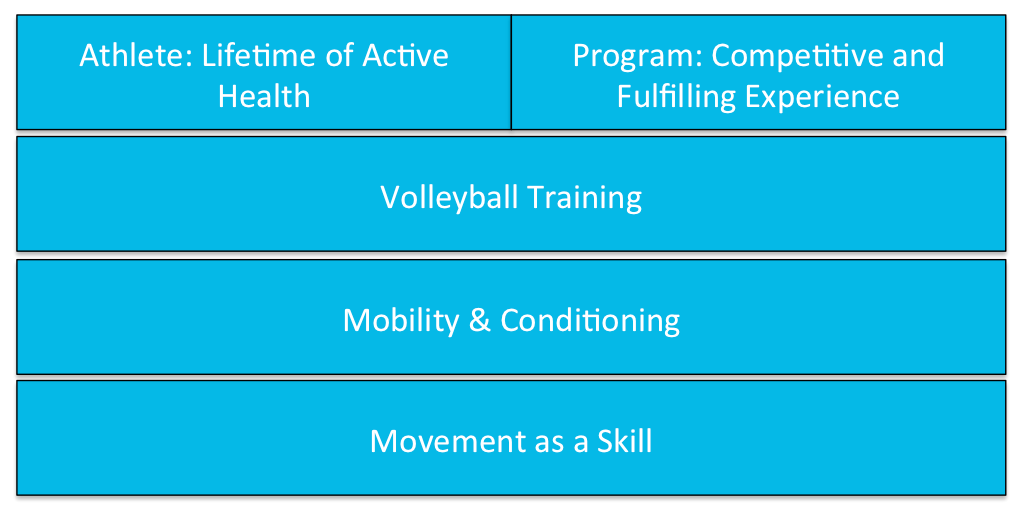
Successful volleyball programs will embrace two goals simultaneously: building competitive teams and a fulfilling training experience, while helping their athletes build a foundation for a lifetime of active health. Research demonstrates that training in healthy movement patterns prevents injury -- so volleyball training itself should be built on a foundation that includes mobility training, and the knowledge that healthy movement patterns must be learned, practiced, and mastered.
So is such a foundation difficult to build? I'll present some strategies and techniques in the next section that, based upon our experience, have been both relatively simple and extremely effective.